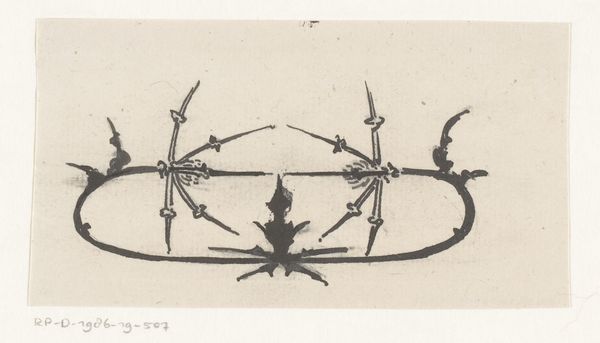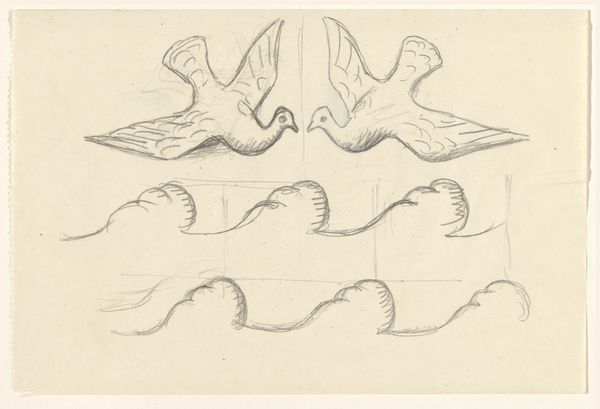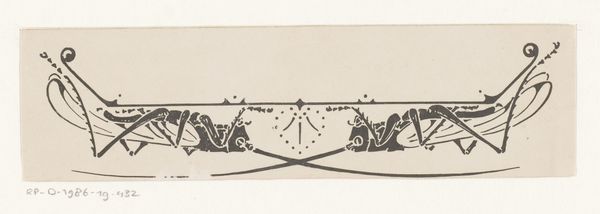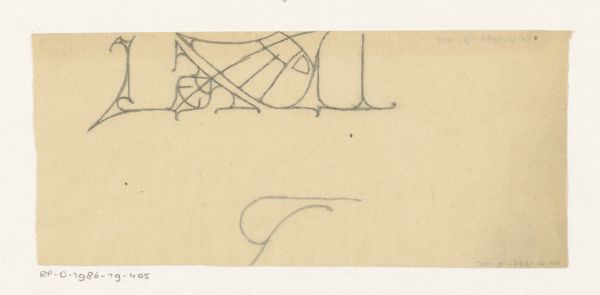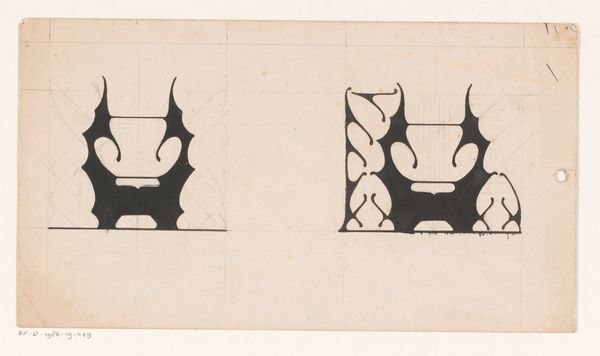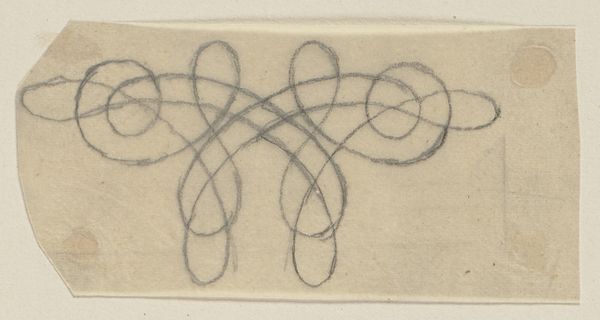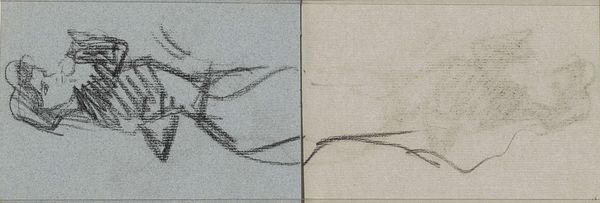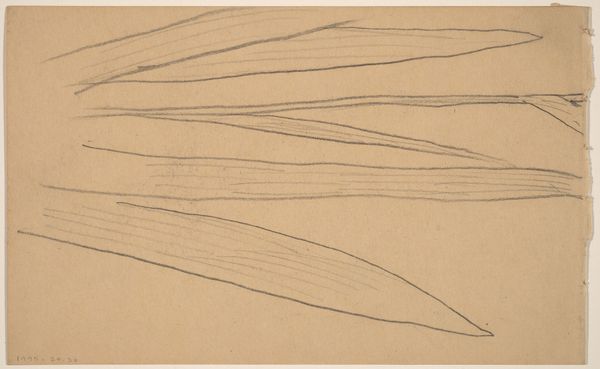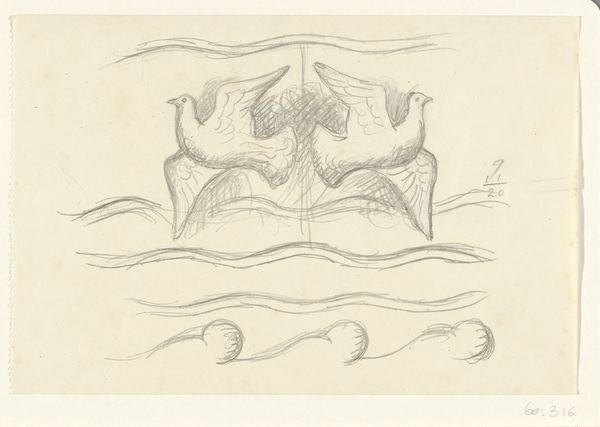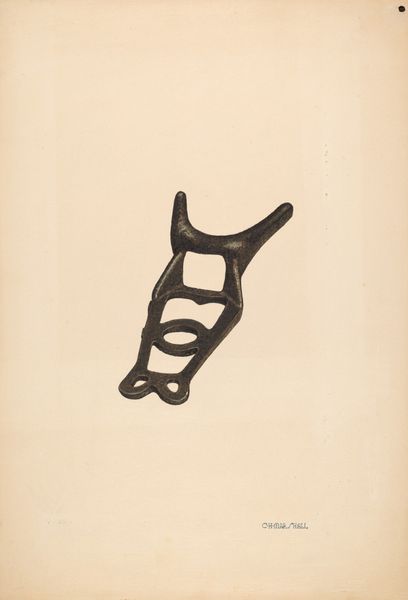
graphic-art, print, linocut
#
graphic-art
#
art-nouveau
# print
#
linocut
#
linocut print
#
geometric
#
line
Dimensions: height 121 mm, width 194 mm
Copyright: Rijks Museum: Open Domain
Curator: This linocut print, entitled "Bandontwerp met kruisende lijnen en zonnen," or "Band Design with Crossing Lines and Suns," was created by Reinier Willem Petrus de Vries sometime between 1884 and 1952. Editor: It has such a calm and measured feeling to it, even with all the crisscrossing lines. The simple blue pigment really sets a tranquil mood. Curator: Yes, it really captures the essence of the Art Nouveau movement, doesn't it? We should contextualize this piece alongside other art nouveau graphic arts of that era and their historical role within discourses on race and identity. The emphasis on line and the geometric simplification really speaks to broader themes of that moment. Editor: It's the medium itself—a linocut print—that strikes me. What was the social standing of the artist and how did it come to produce these striking yet decorative forms through labor intensive hand work? How did this production and consumption influence cultural notions of craftsmanship versus fine art? Curator: That’s a good point; these types of geometric abstractions served different cultural and symbolic functions. We could position this as part of a larger discourse on the use of decorative arts in constructing nationalist identity. It may speak volumes on gendered power dynamics embedded within colonial ideologies and societal attitudes towards craft production and indigenous practices. Editor: Absolutely. The means of production are deeply ingrained. Let’s delve into who was making this type of art, under what conditions, and who it was for. Curator: Right, connecting it back to lived experience and its sociopolitical implications! We must further look at its reception amongst the contemporary viewers and to assess how they navigated through prevailing cultural hierarchies. Editor: It definitely raises interesting questions about the material conditions and labour involved in creating something that appears so effortlessly elegant. Curator: Thinking about these intersections helps us move past simple aesthetic appreciation toward understanding the work's place within the era's power structures. Editor: And examining its creation also enriches our understanding of how materiality and artistry intersected in that time period.
Comments
No comments
Be the first to comment and join the conversation on the ultimate creative platform.
